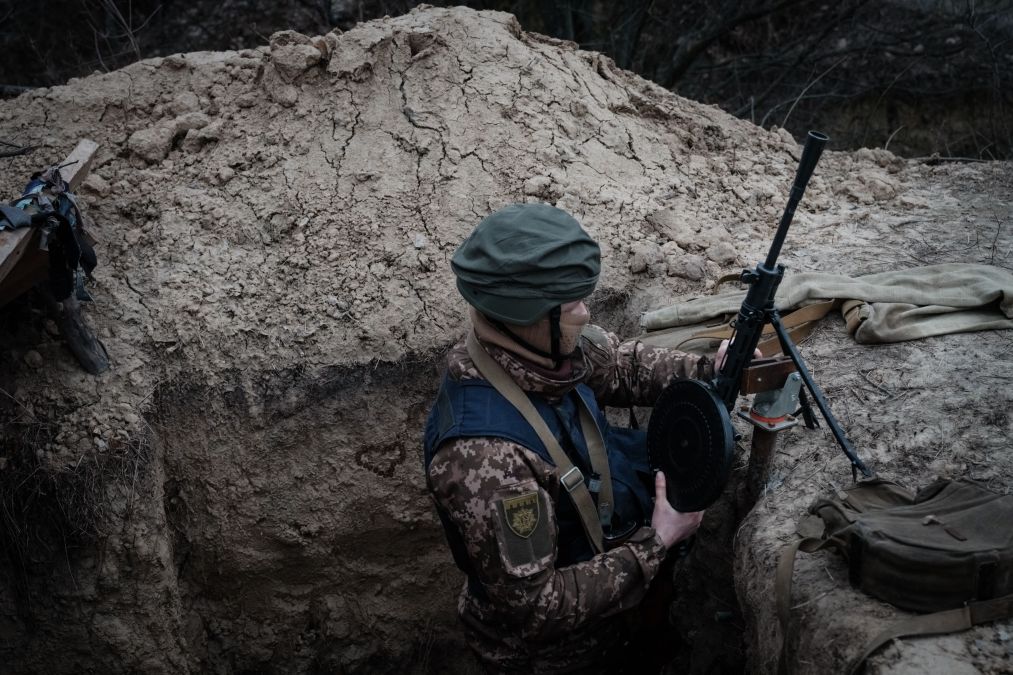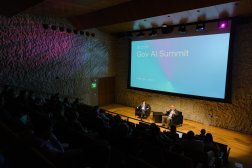Russia-Ukraine war drives the Army to consider possible trans-regional fights of the future

As combat between Russia and Ukraine continues to unfold, this modern conflict is informing how the Army might need to shape up to prepare for future fights, Secretary Christine Wormuth said Wednesday.
Since the onset of the Russia-Ukraine war, the Army has been collecting observations associated with contemporary deterrence dynamics and the possible complexities of future fighting landscapes, Wormuth explained during an event hosted by the Center for Strategic and International Studies.
“I do think the Russians have performed pretty poorly on the battlefield … At the same time, I don’t think we can count [Vladimir] Putin out by any means. But, I don’t think we have the luxury of being able to focus exclusively on the Indo-Pacific, frankly, as much as we might like to,” she said.
Putin’s past actions — and previous invasions in 2008 and 2014 — demonstrate that even if “the war in Ukraine resolves itself in the next year or two,” Wormuth noted, “I think we have to think very seriously and be very concerned about the possibility that Putin will try again to retake territory in Ukraine.”
Though Russia’s military will confront challenges to rebuild from losses it has already faced to date, Putin “is doing everything he can,” in Wormuth’s view, to get material support from other nations, “whether it’s North Korea, Iran or other places.”
Wormuth’s comments come as U.S. leaders have been expressly discouraging China from arming Russia in the conflict — and as Chinese leaders are reportedly considering providing the Russian military with lethal aid.
Amid the current conflict in Ukraine, the U.S. Army is also continuing to mature its own concept of integrated deterrence — a key concept in the National Defense Strategy — and how to best posture its forces down the line, in that context.
Wormuth noted that, to the Army, integrated deterrence has really been about fusing all its diverse tools together across domains and geographic theaters to have the greatest effect in deterring adversaries. A lot of the work associated with that has involved connecting and coordinating capabilities spanning different teams and domains. But now, the service is also thinking more broadly about ways to plan its exercises and activities across time and geographic spaces to enable deterrence.
“I think it’s an advancement of, you know, we spent a lot of time over the decades thinking about engagement and building partner capacity, but we haven’t always necessarily synchronized our activities from one theater to the other. So, now we’re looking at, not just for U.S. Army Pacific, what are we doing in that region and what kinds of messages does it send to China — but how does that integrate and synchronize with what we’re doing back here in [the continental U.S.], to try to develop new weapons capabilities to try to create the greatest deterrent effects?” Wormuth said.
Another one of the big lessons the Army is learning from the combat in Ukraine is how conflict will likely be much more transparent in the future — making it harder for forces to hide.
“Some of that is about the ubiquitousness of sensors and the ability to fuse open-source information. It’s going to be a lot harder to hide our formations on the battlefield than it has been in the past,” Wormuth said.
Part of this is due to the proliferation of commercial off-the-shelf sensors, like drones, that can be easily deployed by small units to track enemy troops, collect intelligence or improve targeting.
Low-cost loitering munitions that were utilized in the 2020 Nagorno-Karabakh conflict in Azerbaijan have demonstrated the ability of small forces to establish some level of air superiority, or at the very least, contest forces using commercial drones. Sophisticated nation-states also possess advanced aerial and satellite capabilities that can track formations and stockpiles.
Moreover, the military has been on a recent trend to utilize open-source information, in many cases, as a first indicator before its exquisite collection capabilities. Last year, the Defense Intelligence Agency was charged with being the defense intelligence enterprise manager for open-source intelligence for all of the Department of Defense.
Additionally, sophisticated tactics employed by top adversaries such as Russia have enabled them to track forces based on their electromagnetic signature.
One of the major takeaways from Russia’s first incursion into Ukraine nearly a decade ago was their ability to locate Ukrainian command posts and fire upon them, just based on their signature.
The Army’s infamous Russia New Generation Warfare study in 2017 spurred several modernization efforts still ongoing today to improve signature management, reduce the size and complexity of command posts and develop better electronic countermeasures and jamming capabilities.
It emphasized the notion that conflict will be much faster and the large static command posts of the counterinsurgency days would not be suitable. Forces must move much more quickly to avoid being located and targeted.
Wormuth also explained that moving forward, soldiers must also be more mindful of their own digital footprints they might leave behind — namely, on social media.
“Our soldiers are going to have to be a lot more concerned about their own signatures. Part of the way the Ukrainians have been able to target the Russians is when the Russian soldiers get on Facebook and post pictures,” she said.
The Army has previously exercised the dangers social media presence and posting can have on a unit deploying. In one example from a few years ago, soldiers deploying from Fort Bragg, North Carolina, to Fort Irwin, California, were told to stay off social media a month prior to the exercise.
On the first day of the exercise, troops were shown how many people the unit had deployed, what base they came from, where they were going, what their mission was and where their families lived, all based on their digital footprints.






